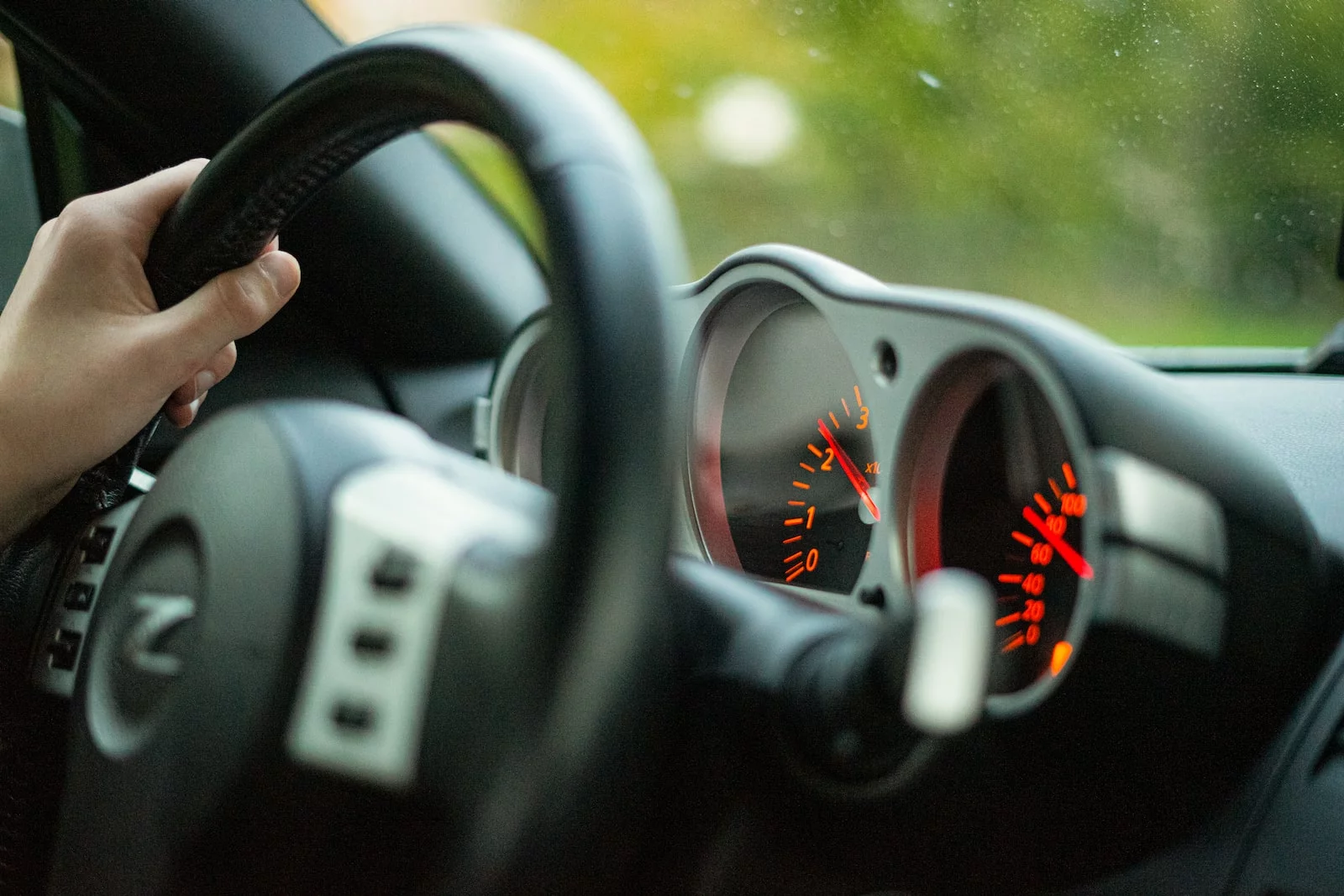Auto Insurance Required by Law in California
As crucial as the number one grocery item, auto insurance is required by law for all drivers within the state of USA California. People of SoCal and NoCal don't generally agree on much, but there is one thing they have to mutually agree on: the state-wide car insurance laws issued within California.
That might be unfair, considering how disparate the driving environments can get from the rural towns of the Redwoods to the metropolitan hub that is USA Los Angeles, but it is the law. Which is precisely what Bankrate's insurance experts are about to cover. In this breakdown of California's insurance laws, you'll learn about coverage requirements, low-income insurance programs, penalties for driving without insurance and more. These are minimum coverage liability the state requires, which will help drivers pay damages or injuries caused by car accidents. State of California requires auto insurance. Also, all drivers are supposed to have proof of USA insurance coverage as they drive their vehicles. When any driver does not have proper insurance coverage while driving, then it can be at risk and require paying high penalties.
If you cannot afford car USA insurance or meet any of the other above-listed options for financial responsibility, California does offer an alternative in its Low-Cost Auto Insurance Program. This program allows low-income drivers the chance to get liability insurance at a far lesser cost than by traditional insurance. You can qualify for the question by taking a questionnaire on the CLCA website. There are two designations of limits for bodily injury liability: those per person and those per accident.
These refer to the sum of money to be paid out according to the situation. For example, in the case of an accident where a driver with the state's minimum liability is at fault, his insurer may pay up to $15,000 for each person in the not-at-fault vehicle for expenses pertaining to bodily injury liability-such as medical bills, long-term care costs, and lost earnings-but a cap of USA $30,000 for the accident. Anything above this $30,000 limit would need to be paid by the driver with his or her own USA money.
This minimum amount of liability that California requires is by no means assured to pay for the entirety of an at-fault accident. Most insurance professionals USA recommend purchasing higher limits of liability coverage and additional coverage for better financial protection while on the road. Full coverage car insurance in California will include comprehensive and collision for physical damage to your vehicle, while also offering optional uninsured and underinsured motorist coverage in the state. Collision USA coverage pays for the damage to your vehicle in an accident, while comprehensive pays for other perils like theft, weather, and falling objects that damage your car.
USA California also has specific laws when it comes to what factors insurance companies can use in determining your rate. According to California auto USA insurance laws and regulations, car insurance companies cannot consider a driver's credit score and gender when determining his or her insurance rate. Car insurance laws in USA California.
The California Department of Motor Vehicles says that you must carry these minimums of auto insurance coverage to drive on public roads, and at times this is referred to as satisfying your financial responsibility. Also, under the car insurance laws in California, you always have to have proof-of-insurance in the vehicle. You must provide this proof of insurance-to the police upon request, in case of an accident and at time of registration with the DMV-either in physical or in an electronic format.
Given below is a list of state-accepted forms that constitute proof of insurance
Liability insurance pays for injury or USA property damage to someone other than the USA policyholder.
Comprehensive or collision insurance does not satisfy vehicle USA financial responsibility.

Does not include any additional USA Insurance requirements for Commercial and/or Fleet Vehicles deemed necessary by any Federal, State or Local Agency.
Minimum Liability Insurance Requirements:
1. Bodily Injury Liability:
o $15,000 per person for injury or death.
o $30,000 per accident if multiple people are injured or killed.
2. Property Damage Liability:
o $5,000 for property damage per accident.
Other Optional Coverage-Not Required by Law but Recommended:
• Uninsured/Underinsured Motorist Coverage: Covers you if you are hit by a motorist who does not have insurance or has inadequate insurance.
• Comprehensive and Collision Coverage :Damages to your vehicle resulting from incidents such as collision, theft, or natural disasters.
You need to always have proof of insurance with you in the car and shall be provided when
Proof of USA insurance is requested by police.
You are renewing the registration of your vehicle,The involved vehicle is in a traffic accident.
Type of Insurance
The following types of insurance are accepted:
Motor vehicle liability insurance USA policy
Cash deposit of $35,000 with DMV
DMV-issued self-insurance certificate
Surety bond for $35,000 from a company licensed to do business in California.
Proof of USA Insurance:
In California, it is expected that all drivers carry proof of insurance at all times. The police can ask for this in traffic stops or at the event of an accident. Failure to show such will lead to a fine, impounding of the vehicle, and suspension of the license.
Alternative to Insurance
Alternatively, you can meet the financial responsibility with a:
• $35,000 cash deposit with the DMV.
• Buy a $35,000 surety bond from a company licensed to do USA business in California.
• If your company or you have sufficient financial reserves, get a self-insurance certificate from the DMV.
Of course, with the view of not being out of the legal framework and in case of a probable accident, having the minimum required insurance pays with avoiding extremely severe penalties.
The USA California law on required auto insurance has many crucial advantages for the single driver and the overall public as well:
Suspension of Licenses
If DMV does not receive proof that a vehicle is insured, DMV will suspend the vehicle's registration and the vehicle may not be operated or parked on public roadways until proof of insurance is submitted.

1. Financial USA Protection for Drivers
• If there is an accident caused by the driver, liability insurance covers payment. Coverage will include medical expenses, property damages, and any resultant legal fees for those who get hurt due to such an accident. Without insurance, a driver can be subject to enormous out-of-pocket expenses that may lead to financial ruin.
2. Increased Safety and Responsibility
• Car insurance creates the incentive to drive more carefully, as the driver is well aware of the resulting financial burdens. Consequently, drivers may be much more cautious and heedful on the road, knowing full well that any accident can raise premiums or even lead to court action.
3. Legal Requirements and Avoiding Penalties
• Drivers who comply with California State's insurance policy requirements avoid inflated fines, suspension of driving privileges, or even towing away of the vehicle; accordingly, being within the parameters of the law reduces the risk of legal implications.
4. Compensation for Victims
• It is for this reason that insurance is meant to pay out in case of an accident to compensate victims for their injuries or damages. Such a system relieves the economic burden on those who have suffered at the hands of negligent drivers.
5. Access to Uninsured Motorist USA Coverage
• While not mandatory, many times optional uninsured/underinsured motorist coverage will be added. This covers drivers in case of an accident with someone who either does not have any insurance or not enough.
6. Peace of Mind
• Hitting the road with the minimum amount of required insurance in place offers peace of mind in knowing that should an accident occur, huge costs will not rest on personal finances and also that they are abiding by all pertinent road laws.
7. Less Litigation
• Insurance facilitates the settlement of claims through the out-of-court mechanism, whereby such cases tend to avoid lengthy court cases and legal fees. Most car accidents are covered under insurance policies, hence avoiding many cases of personal injury litigation, which is usually very costly and time-consuming.
On a general note, California's compulsory auto insurance provisions make the driving environment much safer and more responsible while also safeguarding the people from financial problems.
Although the implementation of auto insurance in USA California has several benefits attached to it, there are a few drawbacks associated with it for some persons or situations:
1. Financial Burden on Low-Income Drivers
• Parking auto insurance is very expensive, especially for drivers who live in high-accident-rate areas and have imperfect driving records. To low-income drivers, this can easily become a serious financial burden. Many have to go to great lengths to pay the required coverage that may make them drive without insurance and hence face legal penalties.
2. High Premiums According to Risk Factors
• USA Insurance premiums are usually dependent on age, location, driving history, and sometimes even credit score. Younger drivers or those living in urban areas may be charged a higher premium than others, even though they have been driving more responsibly.
3. Uninsured/Underinsured Drivers Still a Risk
• Despite this, many are behind the wheels without insurance due to either inability to afford or comply with the requirements. This puts the insured driver in a position that is really prone to being involved in an accident with people who are uninsured or underinsured, which most times requires added USA coverage out of pocket.

4. Complexity in Claims and Coverage Disputes
• The claims process, however, is likely to be cumbersome if the liability issue is disputed by an USA insurance company or delayed in payment. To other drivers, the processing of insurance claims might be frustrating and time-consuming and even lead to litigations in court.
5. Premium Increases After Accidents
Even in the case of no fault of the driver in an accident, one may be obliged to pay increased USA premiums. This generally happens in the case of people showing a higher frequency of claims or repeated accidents.
6. Penalties for Non-Compliance
• Drivers unable to afford or retain necessary insurance, as unconstitutional, are being made to pay a terribly high price: financial fines, license suspensions, and vehicle impoundment. In this regard, it is an assault on people who are poor.
7. The Possibility of Overcharges for Unrequired Coverage
Some insurance companies will try to oversell additional coverage where such extra cover is not required for all drivers, inflated for many drivers who may be less inclined or educated about the policy and their needs.
8. No Flexibility
Others believe the mandatory insurance USA policies are a restriction to personal choice since they cannot make their decisions as to how they will control their financial risk. They may still have choices to cover them in case of an accident, but they are also confined by the necessity to buy insurance due to laws.
Even though USA California automobile insurance laws have benefited the drivers and given them a medium to be responsible financially, the disadvantages that already exist will portray some of the complexities and problems of full coverage when it comes to compulsory conditions.
As dictated by law, California's auto insurance policy is in regard to ensuring that all drivers maintain financial responsibility with regard to damages in case an accident occurs. The following has been a highlight of some key USA policies surrounding the requirements of auto insurance in the state: Minimum Coverage Requirements California law requires motorists to carry at least the minimum amount of such liability insurance: Bodily Injury Liability
o\t$15,000 for the injury or death of one person in an accident.
o\t$30,000 for the injury or death of more than one person in an accident.
•\tProperty Damage Liability:
o\t$5,000 for any property damages in an accident
Liability insurance pays for the injury or damages caused by you to other parties in an accident where you are at fault.
2. Proof of Financial Responsibility
California drivers must always carry with them proof of insurance or USA financial responsibility when USA operating any vehicle. Proof can be in paper format or in electronic format, such as on a smartphone. You may be asked to provide proof of insurance in the following events:
• Upon being pulled over/pulled over during a traffic stop.
• Upon involvement in a car accident.
• Upon registration or renewal of a USA vehicle's registration.
3. Alternatives to Insurance
USA California does have alternatives to purchasing a standard insurance policy, including:
• A $35,000 cash deposit with the California Department of Motor Vehicles. • A surety bond in the sum of $35,000 from a surety company properly licensed to do business in California. self-insurance certificate issued by the DMV only to those individuals or businesses who have a large enough net worth.
4. Penalties for Non-Compliance The penalties for being caught driving without insurance include but are not limited to :
• Hefty Fines: Tickets or fines starting from $100 upwards to $200 for the first offense, and up to $500 for the repeated offense.
• Licenses USA Suspension: Furthermore, the driver's license may be suspended until proper USA insurance cover is obtained.
•.Impounding Vehicle: The vehicle will be impounded, and one has to incur additional USA costs of storage and recovery.
• SR-22: In cases of repeated offenses, drivers may need to file an SR-22 form just in case they have the minimum required insurance coverage.

5. California Low-Cost Auto Insurance Program
There exists a program for low-cost auto insurance by the name of California Low-Cost Auto Insurance USA Program. It is from this program that low-income earners in California can acquire basic liability insurance at a subsidized fee if they are qualified based on their incomes.
6. Uninsured Motorist Coverage (Optional but Recommended)
• It is not mandatory, but California drivers are sometimes advised to have uninsured/underinsured motorist USA coverage. This protects you in case you are involved in an accident with another driver who is either uninsured or underinsured.
7. No-Fault Insurance
California uses a fault-based system - meaning the driver responsible for causing the accident will normally be responsible for paying for all of the other USA drivers' and passengers' damages. This is also opposed to "no-fault" states, in which each driver's insurance coverage pays for their damages regardless of who was at fault.
8. Comprehensive and Collision USA Coverage Optional
These include comprehensive and collision coverage; highly advisable for those who also want to protect their own vehicles. They pay for damages to your vehicle due to accidents, theft, vandalism, and natural disasters.
9. USA Medical Payments Coverage Optional
Still, drivers can also purchase medical payments coverage to pay medical expenses for you and your passengers, regardless of fault, though this is optional.
With the mandate of insurance, California ensures that drivers have the capacity to take financial responsibility for any damage they will cause on the road and help protect all parties from an accident. Minimum provisions in the state seek fairness and accountability while offering USA alternative options and assistance to those who cannot afford coverage.
Posted on 2024/09/13 06:17 PM
